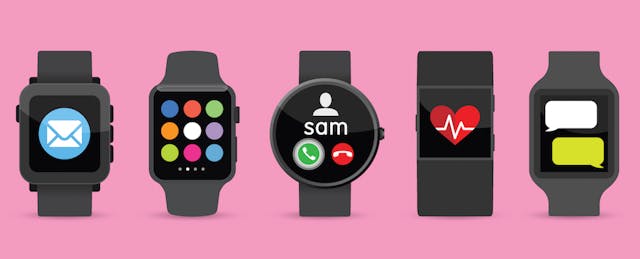Today, technology is allowing us to capture unprecedented data on our daily activities. Wearables like Fitbit track movement, calories burned—even sleep. GPS enabled mobile devices capture my car’s every turn. The Internet of Things helps us understand temperature preferences to optimize energy consumption at home. In each case, widespread broadband access coupled with the explosion of mobile computing is making it easy to measure activities that were, historically, almost impossible to capture.
As it turns out, when people realize how infrequently they move, or how little they sleep, they begin to walk up the stairs—or get to bed just a little earlier. Data leads to awareness. And awareness leads users to adapt their behavior in positive ways. We are only beginning to understand the impact of such data on the design of systems when we view the data in aggregate.
In education, entrepreneurs often seem to take the opposite tack. Rather than start with the existing movements and practices of educators and students, they design tools to disrupt the practice of teaching or learning experiences. When institutions and professors shift their approach, they argue, the impact of technology will be transformative. It’s an attitude with an implicit assumption: If only faculty would step aside, technology could save education.
Recently, the use of predictive analytics has garnered well-deserved interest and attention in higher education. Colleges and universities are using academic data and profiles (demographics, financial information, and past performance) to approximate risk and identify cohorts of students in need of additional support. In higher education, we know a lot about what students did but very little about what they are doing. We have models to predict outcomes but haven’t yet approached the equivalent of the clickstream data that transformed online advertising. Early analytics efforts are producing meaningful results, but the real transformation will not happen until real-time data on actual student behavior is introduced into the equation.
Just a few years ago, capturing data on teaching and learning seemed like science fiction. We banned the very devices that might enable us to transform the black box of large lectures into a treasure trove of data on teaching and learning. Advances in technology have made the capture of data more seamless in many aspects of our lives, and the near ubiquity of broadband access and mobile computing on university campuses is doing so in education. Surveys over the last five years have found that nearly all undergraduate students have access to the Internet on campus or at home. Student behaviors such as asking questions or taking notes can be collected and analyzed. Alone, these activities are meaningless single data points. Together, they establish patterns of risk and opportunity that students and teachers can respond to.
Consider the University of Ottawa, which harnessed the potential of mobile devices in classrooms to help students to sync notes, in real time, with their professor’s presentation. Students were also able to ask questions, anonymously, via their device. One professor found that there was a direct correlation between note taking and asking questions during class. When he encouraged those behaviors, failure rates dropped by 80% and exam grades improved. Indian River State College in Florida is leveraging real-time data on student behaviors to identify where students are struggling and risk falling behind.
When faculty understand the concepts that generate the most confusion in real-time, they can tailor instruction to target areas of concern. University leaders can invest in digital content and resources that correlate with student success. Instructional designers can reflect on student activity patterns and create courseware that target student challenges and, most importantly, attention spans.
We’re in the midst of yet another exciting chapter about how technology will impact our everyday activities. Consumer tech is leading the way by teaching us that both big and “little” data can transform fundamental patterns of behavior. Education may not be far behind. We know that the interaction between faculty and students is the lynchpin of educational success. Faculty are in the best position to observe and influence student engagement, which research tells us is the number one determinant of a student’s success. For example, are students persisting through difficult content? Participating in class? Revisiting course material after class?
These tools are still emerging. And like with the introduction of any new tool, university leaders will need to establish the appropriate guidelines for accessibility, privacy, and security.
What’s most exciting about the transformation we are seeing in education is that the teacher remains at the heart of learning. By observing the art of teaching, we unlock the potential for a new era of big data analytics in education.
Sometimes disruption comes from technology transforming human activity. Other times, simply using technology to pay closer attention to human activity yields the big disruption. The Fitbit approach to educational data gathering may possibly be a key missing link. They say what gets measured gets improved. By paying closer attention to great teaching, we stand to make powerful advances in how we understand and improve learning. Sometimes revolutions can happen in evolutionary ways.


